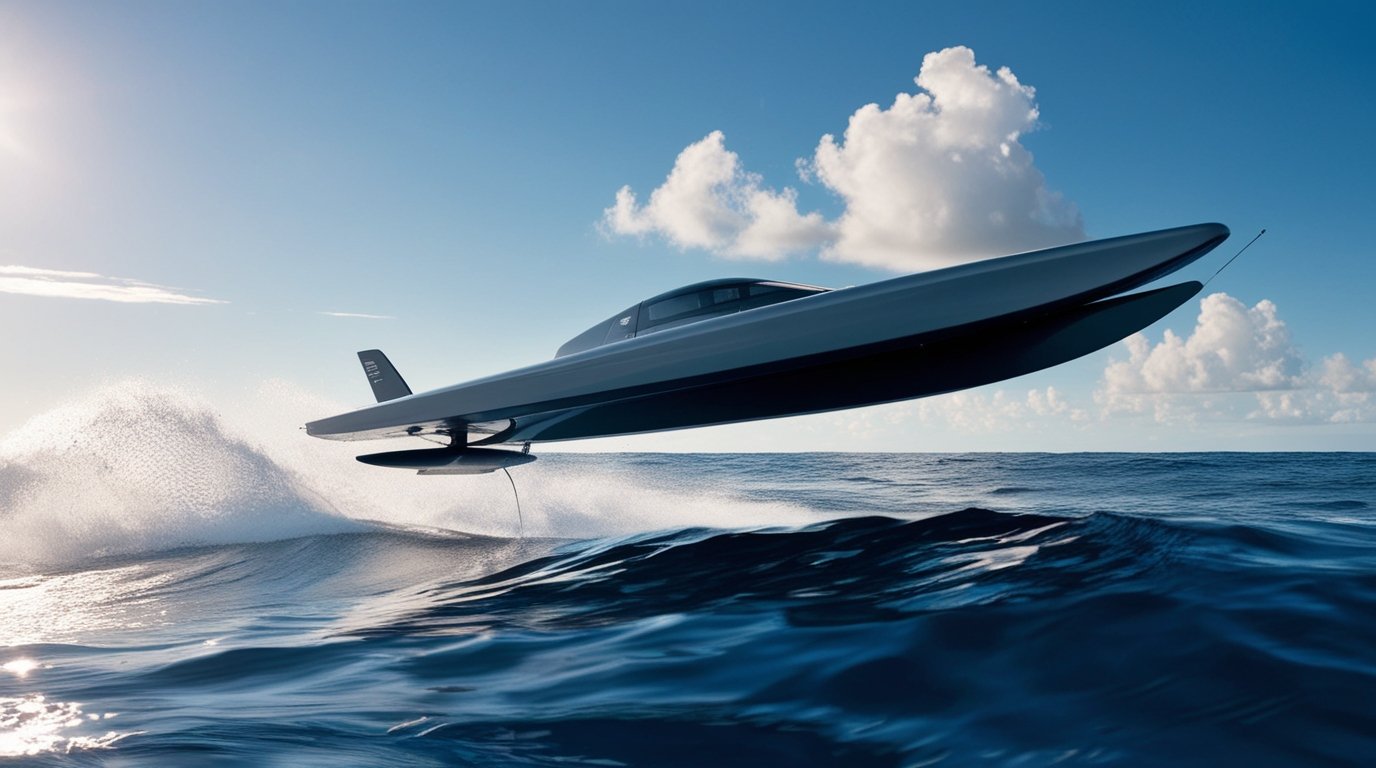Introduction: The Rise of Hydrofoil Technology
Hydrofoil Technology is one of humanity’s most fascinating marine innovations, merging science, sustainability, and speed to revolutionize travel across water.
In 1869, Emmanuel Denis Farcot envisioned boats that could lift above water to drastically reduce drag and increase efficiency.
Although Farcot’s prototype was never built, his idea inspired generations of engineers to bring his vision to life.
In 1906, Enrico Forlanini succeeded by launching a working hydrofoil on Lake Maggiore, marking a new era of maritime design.
Early Innovation and Engineering Breakthroughs
Forlanini’s hydrofoil glided above the waves, proving that lift-based travel could make boats faster and smoother.
This innovation blended aviation principles with naval engineering, creating a foundation for future hydrodynamic experiments.
Among early pioneers, Alexander Graham Bell played a vital role, merging communication brilliance with marine propulsion design.
His HD-4 vessel, developed with engineer Casey Baldwin, achieved a record speed of 70 mph that lasted ten years.
The achievement showed how hydrofoils could exceed traditional hull limitations through reduced drag and enhanced lift.
Hydrofoils lift the hull above the surface, minimizing water resistance and enabling faster, more stable rides.
Only submerged foils touch the water, cutting friction dramatically—much like airplane wings generating lift in air.
This unique mechanism provides stability, speed, and comfort, even in rough marine environments.
Challenges of Early Hydrofoil Designs
Despite their innovation, early hydrofoils faced challenges that limited their success.
Swedish professor Jakob Kuttenkeuler notes that early models performed well in rough seas but were inefficient overall.
They relied on heavy metals and fossil-fuel engines, creating noise and environmental pollution.
The extra weight reduced their hydrodynamic advantage and increased maintenance needs.
By the 1960s, several countries began testing passenger hydrofoils for fast sea transport.
Although these vessels were fast, they struggled with high fuel costs and frequent mechanical issues.
By the mid-20th century, hydrofoil progress slowed due to energy inefficiency and limited materials.
Still, their influence endured, inspiring continued research into automation, composites, and sustainable propulsion systems.
Electrification and Innovation Drive a Hydrofoil Revival
In the 21st century, Hydrofoil Technology has re-emerged as a cleaner, quieter, and more efficient marine solution.
Modern electric hydrofoils eliminate harmful emissions and reduce underwater noise pollution, protecting marine ecosystems.
Professor Kuttenkeuler calls electrification the main catalyst for this global hydrofoil revival.
High-capacity lithium batteries now power electric propulsion systems efficiently, enabling longer, eco-friendly travel.
Lightweight carbon-fiber materials replace steel, improving strength while cutting weight dramatically.
Smart sensors automatically adjust foil angles to balance stability and performance across different wave conditions.
This innovation delivers smooth rides, reduced drag, and enhanced safety for passengers.
Unlike older V-shaped foils, modern single-foil systems consume less power and extend range significantly.
Electric ferries and sports crafts can now travel farther, faster, and cleaner than ever before.
The eFoil Revolution and Growing Popularity
Kuttenkeuler’s invention, the eFoil, brought hydrofoil experience to recreational use, letting riders literally fly above the water.
Powered by compact electric motors, eFoils offer zero emissions and thrilling speed for enthusiasts and adventurers alike.
This water innovation has become a favorite among athletes, engineers, and even tech icons like Mark Zuckerberg.
What began as an engineering niche has become a global movement toward sustainable, high-performance marine recreation.
The growing interest in hydrofoils reflects a worldwide shift toward cleaner, smarter mobility beyond roads and skies.
Future Prospects: Smarter, Cleaner, Faster
Cities are now adopting electric hydrofoil ferries to cut emissions, travel time, and marine congestion.
These ferries consume less energy than diesel boats, aligning perfectly with carbon-neutral transport goals.
Manufacturers are exploring hydrogen fuel cells, solar charging, and AI-based navigation for automated control.
AI-driven hydrofoils can adapt to sea conditions in real-time, optimizing energy use and ensuring smooth travel.
Such systems could revolutionize cargo transport, tourism, and global maritime logistics.
A Sustainable Future for Hydrofoil Technology
From surfboards to ferries, hydrofoils now symbolize innovation and environmental responsibility.
They’re no longer experimental curiosities but essential tools for sustainable marine travel.
As demand for clean transportation grows, Hydrofoil Technology stands ready to redefine how we cross the oceans.
The dream that began in 1869 with Farcot’s imagination now glides toward a faster, greener maritime future.
